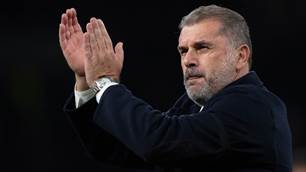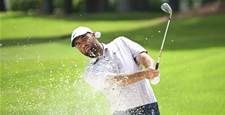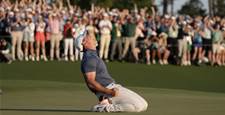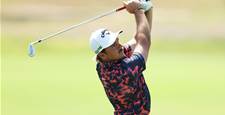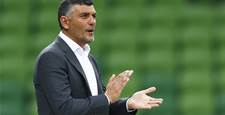With Cahill approaching his 100th Socceroos cap against Chile, has the talismanic forward done enough to secure his spot at the 2018 World Cup? Or is there just nobody else ready to take his place.
On June 18, 2014, as events unfolded in Porto Alegre, a nation held its breath. A warm afternoon of Dutch dominance had lulled the Estadio Beira Rio into relaxation, but the ground’s kaleidoscopic colours cast an ethereal glow over proceedings, setting the scene for something extraordinary.
Tim Cahill’s 21st minute, first-time, wrong-footed, Oranje-scrambling, world-defying volley against the Netherlands is every Australian’s lasting memory of the 2014 World Cup.
With one strike, Cahill reimbursed the 18-hour plane trip, exorbitant ticket prices and dodgy street vendor curries that, for many Australians, would have otherwise been the lasting memory of their Brazilian pilgrimage.

Considering the Socceroos lost all three matches, that one exhilarating moment inspired more than just a team and a coach, it justified a nation’s plight to be taken seriously on the world stage. Cahill was the golden generation’s last man standing, and on the world stage, he still had the midas touch.
Today, it’s debateable whether Australians would view that tournament differently without Cahill’s goal. What is certain, is that without Timmy’s contribution, the career of Ange Postecoglou would be seen very differently indeed.
Almost 30% of the Socceroos goals under Postecoglou have been scored by Cahill. He’s been largely responsible for eight of Postecoglou’s 19 wins as Socceroos coach. Cahill’s a national icon, a poster-boy for Aussie football and a powerful influence within the Australian dressing room.
As Postecoglou said yesterday, Cahill is "a great Australian who transcends sport.”
The size of the FFA’s ‘Cahill fund’ to bring him to Melbourne City last season suggests that he’s a powerful influence at every level of Australian football. So, as the forward approaches 38-years-old, the question arises, how does Postecoglou replace him?
Despite Ange’s previous ruthlessness with ageing stars, he can’t. Postecoglou’s 2016 book ‘Changing the Game’ details how he told Lucas Neill he hadn’t made the Brazil World Cup squad;
“’Lucas, it’s gone too far…let’s deal with it now. You’re not coming to Brazil."
Postecoglou’s ability to put sentiment aside in his approach to Socceroos regeneration was admirable, but what happens if Cahill stops contributing to the same extent that Neill did? Comparing Postecoglou’s relative approaches to Neill and Cahill draws stark comparisons.
Cahill’s career has been declining over the past two years. In his last 10 Socceroos appearances – totalling 285 minutes – Cahill’s scored once. It’s a record made worse by the fact he hasn’t registered an assist or earned a penalty in that time, either.
Cahill also has a high turnover rate, and limited pressing ability. His leadership, influence and ability as an impact player – to nick a goal from a corner or early cross – is undoubted. But at 37-years-old, Cahill’s role still extends beyond that.

In the Socceroos recent friendly against Brazil, Cahill started and played almost 70 minutes in front of Jamie Maclaren, a 23-year-old whose 19 goals this season led the A-League, and who recently transferred to the 2.Bundesliga.
Choosing Cahill before Australia’s most promising young striker seems short sighted, and an unnatural fit for Postecoglou’s emphasis on youth development.
If Tomi Juric was in poor form, or our system was perfectly suited to Cahill, then playing a 36-year-old might make sense, but this isn’t the case. The Socceroos aren’t looking for a starting striker and Brazil were always going to commit men forward, which was an opportunity to utilise Maclaren’s superior speed and stamina.
If Postecoglou thought Brazil was too fiery a baptism – which goes against the coach’s self-belief mantra – then he wouldn’t of debuted Maclaren against England over a year ago. Since then, the prolific young striker has only made two appearances under Postecoglou, both as a substitute.
The idea that Australia’s best young striker isn’t suited to Postecoglou’s system is strange. Maclaren shows deadly poaching instincts and can create movement in the attacking third. Perhaps Postecoglou feels that he can’t hold the ball up or provide a threat from crosses, but he’s barely given the young forward a chance, far less adapted the system slightly to try to incorporate him.
If friendlies are about developing depth, Maclaren seems the obvious candidate, but Adam Taggart is another forward who’s superior strength and ability to retain the ball – when fit – could see him fit within Ange’s style.

Regardless of system, impact players don’t start friendly matches over highly talented youngsters. Cahill is Australia’s back up striker, and with only a year to go until the world cup – assuming Australia qualifies – little looks set to change.
Perhaps Ange simply doesn’t believe Maclaren’s ready. Or perhaps he’s become more cautious since Taggart’s brief spell in the side during the 2014 World Cup. But it’s remarkable that since 2014, Postecoglou hasn’t been tempted to take a dip in Australia’s striking talent pool.
If he doesn’t believe it's deep enough, perhaps he needs to dig a little. Should he find someone, it wouldn’t be the first time he’s thrown someone in the deep end and they’ve emerged a champion.
Should Cahill’s game time continue, questions have to be raised over whether the Aussie talisman is willing to accept an impact player role, or whether Ange is eager to enforce it.
It almost seems harsh to judge Cahill by his statistics, like you would any other player, because over the years he’s proven to be much more than that. But if sentiment comes at the expense of young Australian footballers – in a phase where player development is still a primary concern – it makes you wonder whether Ange is showing double standards.
Cahill’s resurgence at club level, after two unsuccessful spells in China, has somewhat saved him this season. Even if his 11 A-League goals pale in comparison to Jamie Maclaren’s 19, if Postecoglou wants results in this Confederations Cup group of death, perhaps Cahill is still the most qualified.
But his inability to impact his last few encounters has been obvious, and it’s too hard to tell whether he deserves the amount of time he’s getting – especially in friendlies – because Postecoglou hasn’t tried anyone else.

On the world stage Cahill’s been the Socceroos flagbearer, and as with every fading superstar, Postecoglou seems to be grappling with how and when to phase him out.
The Aussie coach is far from unique in this problem, but just because nobody could ever truly take Cahill's role, doesn't mean he'll be around forever.
Related Articles
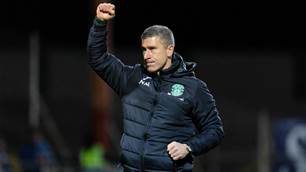
Champion A-League coach set to join Premier League giants
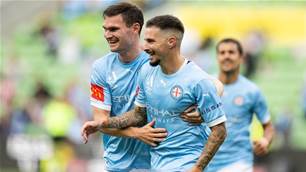
City's Socceroos striker not in ALM All Stars squad
